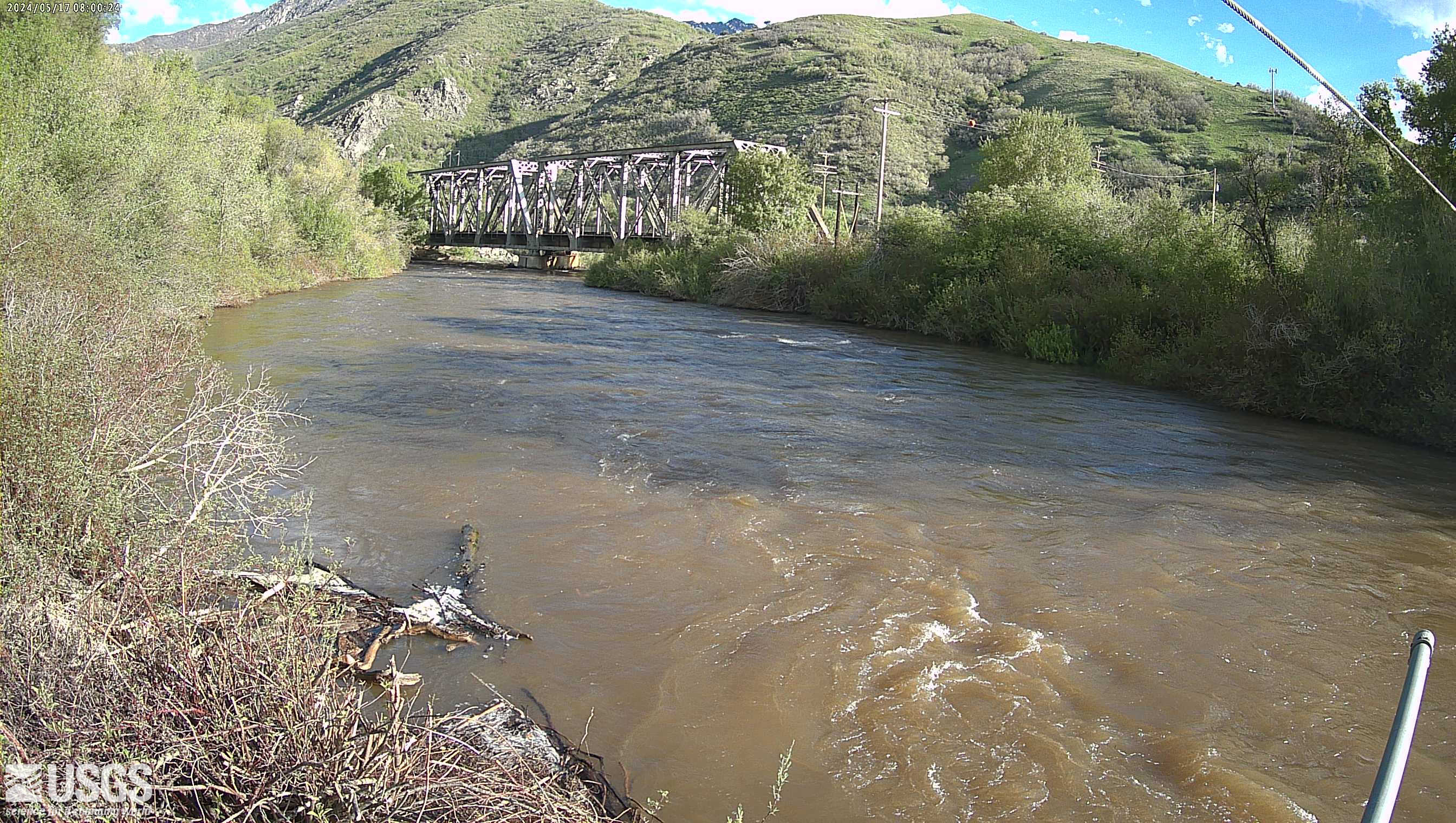Weber River, UT Weather Cams
USGS Cam Weber River at Gateway, UT

The Weber River: A Utah Lifeline
Weber River UT Weather Cams. The Weber River, a vital artery in Utah’s north, boasts a rich history intertwined with the state’s development. Stretching roughly 125 miles from the Uinta Mountains to the Great Salt Lake, the Weber has served as a source of life and resource for centuries.
Origins and Geological Formation
The Weber River, a vital watercourse in northern Utah, has shaped the region’s history, ecology, and settlement patterns for centuries. Originating in the Uinta Mountains, the river flows southwest for approximately 125 miles before emptying into the Great Salt Lake. The river’s journey begins at around 10,000 feet above sea level, where snowmelt and springs from the Uintas converge to form its headwaters.
The geological formation of the Weber River basin is the result of millions of years of tectonic activity, erosion, and glaciation. The Uintas, a unique east-west mountain range, were uplifted during the Laramide orogeny around 70 million years ago. Subsequent glacial periods sculpted the valleys and peaks, creating the watershed that feeds the Weber River. This process not only defined the river’s course but also enriched the soil in the valleys, making them fertile grounds for agriculture and settlement.
Native American Heritage
Long before European settlers arrived, the Weber River Valley was home to Native American tribes, particularly the Shoshone and Ute people. These tribes relied on the river for sustenance, using its waters for fishing and its fertile banks for cultivating crops. The river also served as a travel route and a source of spiritual significance.
The name “Weber” is believed to be derived from a fur trapper named John Henry Weber, but its indigenous history predates this period by millennia. The Shoshone and Ute people had complex societies and economies that were intricately connected to the natural resources provided by the river and its surrounding environment.
European Exploration and Settlement
The first Europeans to explore the Weber River Valley were fur trappers and traders in the early 19th century. The river became a notable route for trappers seeking beaver pelts, a valuable commodity at the time. John Henry Weber, after whom the river is named, was one of the prominent trappers in the area during the 1820s.
Mormon pioneers, led by Brigham Young, began settling in the region in the mid-19th century. In 1847, the first group of settlers arrived in the Salt Lake Valley, and by 1850, they had begun to establish communities along the Weber River. These settlers recognized the river’s potential for irrigation, crucial for their agricultural endeavors in the arid climate of Utah.
Development of Irrigation and Agriculture
The development of irrigation systems was pivotal for the success of the early settlements along the Weber River. The Mormons constructed canals and ditches to divert water from the river to their fields, transforming the landscape into productive farmland. These irrigation practices allowed the settlers to cultivate a variety of crops, including wheat, barley, corn, and alfalfa, which were essential for their sustenance and economic stability.
The Weber River irrigation system was one of the first major irrigation projects in the western United States. The success of these early efforts led to the establishment of the Weber Basin Water Conservancy District in 1950, which continues to manage water resources for agricultural, municipal, and industrial use in the region.
Industrial Growth and Hydroelectric Power
The arrival of the transcontinental railroad in the late 19th century brought significant changes to the Weber River Valley. The railroad facilitated the transport of goods and people, spurring industrial growth and urbanization in the area. Towns like Ogden, located along the river, became important commercial and transportation hubs.
In the early 20th century, the development of hydroelectric power plants along the Weber River marked another significant milestone. The first hydroelectric plant, the Weber Hydroelectric Plant, was constructed in 1909. These plants harnessed the river’s flow to generate electricity, providing power for homes, businesses, and industries in the region. The use of hydroelectric power also highlighted the river’s importance as a resource for both natural and human-made systems.
Conservation and Environmental Challenges
Throughout the 20th century, the Weber River faced numerous environmental challenges, including pollution, habitat degradation, and water management issues. Industrial activities, urbanization, and agricultural runoff contributed to the pollution of the river, affecting water quality and aquatic life.
In response to these challenges, various conservation efforts have been implemented to protect and restore the Weber River. The Weber River Partnership, established in the early 21st century, brings together stakeholders from government agencies, non-profit organizations, and local communities to address environmental issues and promote sustainable water management practices.
Efforts to restore riparian habitats, improve water quality, and enhance fish populations have been central to these conservation initiatives. Programs to remove invasive species, reintroduce native plants, and create fish passage structures have helped to revitalize the river’s ecosystem, ensuring its health and vitality for future generations.
Recreation and Cultural Significance
Today, the Weber River is not only a critical water resource but also a popular destination for outdoor recreation. The river offers a range of recreational activities, including fishing, kayaking, tubing, and birdwatching. Its scenic beauty and diverse wildlife attract visitors from across the region, contributing to the local economy and fostering a sense of connection to the natural environment.
The Weber River is renowned for its fishing opportunities, particularly for species such as brown trout, rainbow trout, and cutthroat trout. Anglers from near and far come to the river to enjoy its productive waters and scenic surroundings. The river’s recreational value underscores its cultural and economic importance to the communities along its banks.
Looking to the Future
As the Weber River continues to face the pressures of population growth, climate change, and competing demands for water, the importance of sustainable management and conservation efforts cannot be overstated. Collaborative initiatives involving government agencies, conservation organizations, and local stakeholders are essential to ensuring the river’s long-term health and resilience.
The Weber River’s history is a testament to its enduring significance as a lifeblood for the people, wildlife, and ecosystems of northern Utah. From its geological origins and Native American heritage to its role in agriculture, industry, and recreation, the river’s story is one of adaptation, innovation, and stewardship. By honoring and preserving this vital waterway, we can ensure that the Weber River continues to flow as a source of life, inspiration, and connection for generations to come.
For more information, visit the official Visit Utah website.
